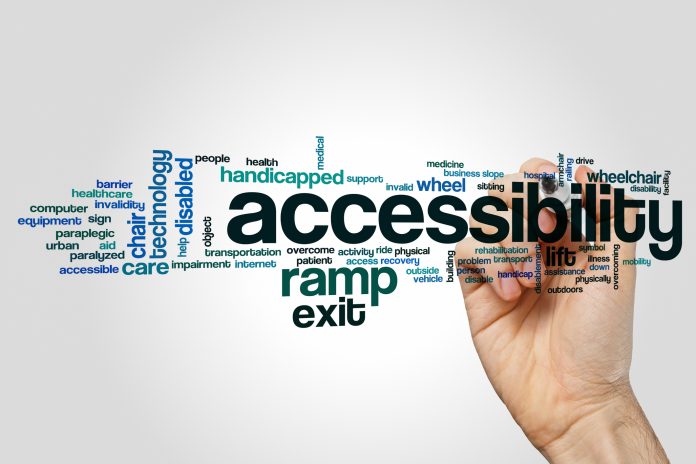Ian Streets from About Access discusses tackling accessibility issues by educating others in order to share expert knowledge
Some people might find it strange that our training around accessibility issues even extends to showing our clients how to train others.
But our view is that if someone won’t show you what they do because they’re worried you won’t need them anymore, it probably means they didn’t know much in the first place.
It helps of course that our specialist subject can be very complex and open to interpretation. It can also change as a result of advances in healthcare, technology, legislation and guidance, making it advisable at least for people working in the sector to keep on top of developments.
Within the last few weeks we were chatting to an experienced staff member at a charity which works with people who have a learning disability when he spoke about the need to adhere to the provisions of the Disability Discrimination Act. The one that was replaced by the Equality Act in 2010.
Relevant teaching
In truth, we don’t give everything away. It would take too long, much of the training wouldn’t be relevant to the individuals on the course and that would be reflected in their loss of appetite to learn.
But we do show the delegates on our courses everything they need to know to perform their roles effectively. Taking the access audit course as an example, that means telling people – and sometimes showing them – what an access audit is and how the approach can vary depending on the building or service which is being audited.
We agree the brief up front and we include it in the final report so people who read in in future and were not involved can see why various areas were and were not included. For example, in a retail environment the brief might be to only look at public areas rather than staff areas.
We then assess against pre-determined criteria, which can vary depending on the use of a building. It makes sense that guidance for health care facilities varies depending on whether a space is used for treatment and consulting rooms or for waiting rooms and reception.
In a sports centre the features you will be considering might include the sports hall, with basketball players using wheelchairs. They require larger corridors and wider doors because their wheels are splayed to give greater stability. You also have to think about disabled people using the other facilities such as the gym or the pool. How accessible are the facilities there?
Auditing for accessibility issues
The audit will assess the usability and make recommendations to improve accessibility. The final report does not have to be delivered to a defined style but it should contain the key elements of an executive summary, building description including its use, and an assessment, including any recommendations. These should be prioritised so a client can identify the most serious issues.
The length of the document will vary depending on the complexity of the building rather than the size of it. An aircraft hangar is generally a large shed and might only be of interest because it has an office and a loo in the corner. A large Victorian building or a country house is likely to be a lot more complex, with a large number of rooms of varying shapes and sizes plus staircases, corridors windows and perhaps several entrance and exit points.
From the report the client should be able to develop an action plan so they know what they are going to do going forward, but how the course delegates apply their knowledge depends on why they need it.
Flexible training
Our standard two-day package allocates a day and a half to looking at technical guidance, user needs and legislation and then half a day of practical training. But it’s flexible because on another day we might have a room full of delegates who fully understand all the technical guidance but lack any practical experience and knowledge of what disabled people want, such as why a handrail should extend horizontally at the top and the bottom of a set of steps.
Surveyors might take the view that as they are working purely on new-build their focus should be on site plans rather than on access audits of existing buildings.
One training client was from a charity, which wanted to supplement its income by providing access audits. They had a good understanding of pan-disability because that’s what they do. They had a good grasp of the legislation as well, but they were light on the technical side so we adapted the training accordingly.
We devoted the first day to the technical side and they spent the second day shadowing us on carrying out the actual audit. That process took them through everything that was relevant to their requirements and we concluded by showing them our actual report so they would know how to present their findings as clearly as possible.
We still work for the client but they only draw on our support to deal with more complicated issues. Armed with the knowledge they gained from finding out how to conduct an access audit they are now able to liaise with other organisations in their area and share best practice, and that helps to create a more inclusive world.
If you need help improving the accessibility of your organisation or to do more by improving your skills then please get in touch and check out our website www.aboutaccess.co.uk

















